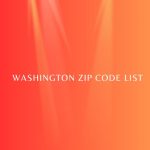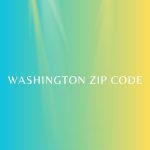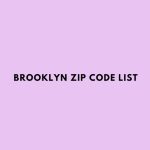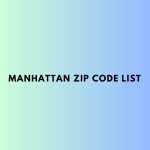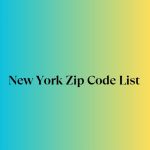Introduction
Brooklyn, one of New York City’s most vibrant and diverse boroughs, is a tapestry of unique neighborhoods, each with its own story to tell. One way to navigate and understand this urban mosaic is through its zip codes. These seemingly simple numerical codes play a crucial role in organizing the borough’s geographical and social landscape.
History and Significance of Brooklyn’s Zip Codes
The concept of zip codes was introduced by the United States Postal Service in 1963 to streamline mail delivery and improve efficiency. Brooklyn, with its rapid growth and bustling activity, benefited significantly from this system. The zip code system not only facilitated mail delivery but also contributed to the borough’s organization and development.
Understanding Zip Code Structure
A zip code is more than just a series of numbers. The first digit represents a group of U.S. states, the second and third digits together represent a region in that group (or perhaps a large city), and the fourth and fifth digits represent a group of delivery addresses within that region. For Brooklyn, these codes help demarcate its various neighborhoods, aiding in navigation and services distribution.
Zip Code Areas in Brooklyn
Brooklyn’s zip codes are divided into several key areas, each with its own characteristics and charm.
Northern Brooklyn Zip Codes
This area includes neighborhoods like Williamsburg (11211, 11249) and Greenpoint (11222), known for their hipster vibes, trendy cafes, and vibrant arts scene.
Central Brooklyn Zip Codes
Central Brooklyn covers areas like Bedford-Stuyvesant (11216, 11221) and Crown Heights (11213, 11225), neighborhoods rich in cultural history and diversity.
Southern Brooklyn Zip Codes
Southern Brooklyn includes residential and seaside neighborhoods like Sheepshead Bay (11235) and Coney Island (11224), offering a mix of quiet suburban life and beachfront attractions.
Notable Neighborhoods and Their Zip Codes
Williamsburg (11211, 11249)
Once an industrial area, Williamsburg has transformed into a cultural hotspot, famous for its music venues, art galleries, and waterfront parks.
Brooklyn Heights (11201)
Brooklyn Heights boasts beautiful brownstone architecture and stunning views of the Manhattan skyline, making it one of the most desirable places to live in Brooklyn.
Park Slope (11215)
Known for its family-friendly atmosphere, Park Slope features historic buildings, tree-lined streets, and proximity to Prospect Park.
Coney Island (11224)
Coney Island is synonymous with entertainment, home to iconic amusement parks, boardwalks, and the annual Mermaid Parade.
Demographics and Zip Codes
Brooklyn’s zip codes reveal a mosaic of demographics. Each neighborhood showcases a unique blend of cultures, age groups, and socioeconomic backgrounds. Understanding these demographics can provide insights into the borough’s dynamic community life.
Population Distribution
Some zip codes, like 11226 in Flatbush, are densely populated, while others, like 11234 in Mill Basin, have a more suburban feel with lower population density.
Socioeconomic Factors
Zip codes can also indicate economic diversity. For instance, 11201 (Brooklyn Heights) tends to have higher income levels compared to 11212 (Brownsville).
Economic Impact of Zip Codes
Business Locations
Certain zip codes are hotspots for business activities. Areas like 11217 (Downtown Brooklyn) are bustling with corporate offices, retail stores, and dining establishments.
Real Estate Market
Real estate trends often vary significantly by zip code. High-demand areas like 11215 (Park Slope) see higher property values, while more affordable housing can be found in 11207 (East New York).
Cultural Significance of Zip Codes
Brooklyn’s cultural landscape is heavily influenced by its zip codes, each fostering unique traditions and lifestyles.
Influence on Identity
Residents often identify strongly with their zip codes, which can reflect neighborhood pride and community spirit.
Arts and Entertainment
Neighborhoods like 11249 (Williamsburg) are cultural epicenters, hosting numerous festivals, galleries, and live performances that attract visitors from all over.
Education and Zip Codes
Schools and Districts
School quality can vary by zip code, influencing families’ decisions on where to live. Zip codes like 11215 (Park Slope) are known for their reputable schools.
Zip Code Influence on Education Quality
The allocation of resources and funding often correlates with zip code demographics, impacting the quality of education and facilities available to students.
Healthcare Services by Zip Code
Hospitals and Clinics
Access to healthcare varies across Brooklyn. Some zip codes are served by major hospitals like NYU Langone in 11220 (Sunset Park), while others rely on smaller clinics.
Access to Medical Services
Zip codes can indicate the level of medical services available, with some areas having more comprehensive healthcare options than others.
Public Services and Zip Codes
Police and Fire Departments
Public safety services are distributed based on zip codes, ensuring coverage across the borough. Areas with higher population densities often have more concentrated services.
Public Transportation
Transportation infrastructure, including subway and bus routes, is often organized by zip code, affecting commute times and accessibility.
Real Estate Trends by Zip Code
Housing Prices
Housing prices can fluctuate greatly between zip codes. High-demand areas like 11201 (Brooklyn Heights) see premium pricing, while more affordable options are available in 11212 (Brownsville).
Rental Markets
The rental market also varies, with neighborhoods like 11215 (Park Slope) commanding higher rents due to their amenities and desirability.
Tourist Attractions by Zip Code
Historical Sites
Brooklyn is rich in history, with many landmarks located in specific zip codes. For example, 11231 (Red Hook) is known for its historic waterfront and shipping heritage.
Parks and Recreation
Parks like Prospect Park in 11225 (Crown Heights) offer recreational opportunities and green spaces for residents and visitors alike.
Challenges and Changes in Brooklyn Zip Codes
Gentrification
Gentrification has significantly impacted zip codes such as 11206 (Bushwick), leading to shifts in demographics and increased living costs.
Population Shifts
Brooklyn’s population is constantly evolving, with some areas experiencing growth while others see decline, often influenced by economic and social factors.
Future of Brooklyn Zip Codes
Predicted Changes
Future developments, including new housing projects and business districts, are expected to alter the landscape of several Brooklyn zip codes.
Impact of Development Projects
Large-scale projects like the redevelopment of the Brooklyn Navy Yard in 11205 are set to bring new opportunities and challenges to the borough.
Conclusion
Brooklyn’s zip codes are more than just numbers; they are keys to understanding the borough’s rich and diverse tapestry. From bustling business districts to serene residential areas, each zip code offers a unique glimpse into the life and culture of Brooklyn. As the borough continues to grow and change, its zip codes will remain integral to its identity and function.
FAQs
1. How many zip codes are in Brooklyn? Brooklyn has over 60 zip codes, each representing different neighborhoods and areas within the borough.
2. Which Brooklyn zip code is the most expensive? Typically, zip codes like 11201 (Brooklyn Heights) and 11215 (Park Slope) are among the most expensive due to their desirable locations and amenities.
3. What zip code is Downtown Brooklyn? Downtown Brooklyn is primarily covered by the zip code 11201.
4. How are zip codes assigned in Brooklyn? Zip codes in Brooklyn are assigned based on geographic areas and population density to facilitate efficient mail delivery and public services.
5. Can zip codes affect my mail delivery? Yes, zip codes are crucial for accurate mail delivery. Incorrect zip codes can lead to delays or misdelivery of mail and packages.


